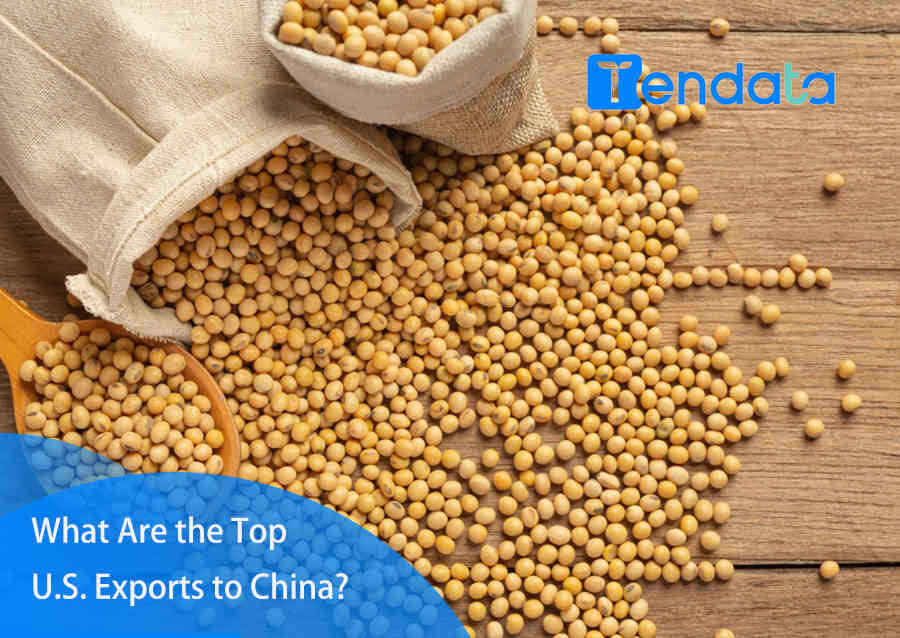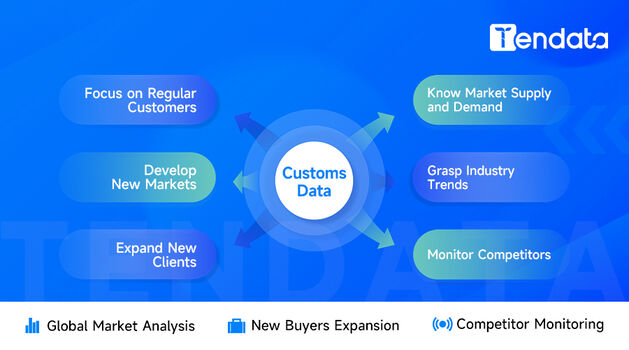 Export News
Export News
 2024-02-04
2024-02-04
China and the United States are the world's two largest economies by gross domestic product (GDP). Together, the two countries account for more than 42 percent of global GDP.
In 2022, $154 billion, or 7.5%, of the U.S.'s $2.1 trillion in global merchandise exports went to China. in 2023, U.S. trade with China decreased.

What are the U.S.'s largest overall export commodities?
The country's top three global export commodities are fuel-related, accounting for 16.9 percent of the total value of commodities: non-crude oil, crude oil, liquefied petroleum gas, and other gaseous hydrocarbons. The next highest value category comes from the transportation sector: civil aircraft and aircraft parts valued at more than $94 billion, and automobiles and transportation vehicles valued at more than $58 billion. The U.S. also exported nearly $52 billion in electronic integrated circuits and micro-assembled parts used in the manufacture of electronic devices.
In 2023, according to Tendata's latest customs data, what are the major U.S. exports to China in terms of non-bulk goods bought and sold?
1. HS code: 470321: Semi-bleached or bleached coniferous chemical wood pulp, soda ash or sulfate (excluding dissolving grade) (4.53%)
2. HS code: 120190: Soybeans, whether broken or not (excluding seeds for sowing) (4.10%)
3. HS code: 121490: Swedish grass, Mangold, forage roots, hay, alfalfa "clover", clover, red dock, forage collards, lupins, wild peas and similar forage products, whether or not in pellet form (excluding alfalfa "clover " coarse meal and pellets) (2.98%)
4. HS code: 520100: Cotton, not carded or combed (no labeling details provided) (2.02%)
5. HS code: 284019: Disodium tetraborate "fine borax" (excluding anhydrous) (1.03%)
6.HS code: 470200: Chemical wood pulp, dissolving grade (0.72%)
7. HS code: 440791: Oak "Quercus spp.", sawn or chipped, sliced or peeled lengthwise, whether or not planed, sanded or terminated, of a thickness > 6 mm (0.70%)
8. HS code: 230110: Flour, coarsely ground and granulated, meat or offal, unfit for human consumption (0.65%)
9. HS code: 740400: Copper waste and scrap (excluding ingots or other similar unwrought shapes of remelted copper waste and scrap, ashes and residues containing copper, and waste and scrap of primary batteries, primary battery packs and accumulators) Copper waste and scrap (excluding ingots or other similar unwrought shapes of remelted copper, ashes and residues containing copper, and waste and scrap of primary batteries, primary battery packs and accumulators) (no details) labeling) (0.63%)
10. HS code: 020714: Frozen cuts and edible offal of poultry: (0.56%)

"Customs data contains vast information, and extracting relevant customer contact details can be time-consuming, often yielding results that fall short of expectations. Is it really the case? Or is it because customs data is being utilized incorrectly, resulting in wasted effort and time?
Developing customers using customs data involves precisely characterizing all buyers and their procurement systems in the target market. This allows for the quick identification of the most compatible customers, discerning their credit systems and procurement details. It aids in defining high-quality customers and profit margins, enhancing development efficiency, and improving overall effectiveness. When using customs data to develop new customers, consider the following three approaches. (>>>Click to Get Free Access to Customs Data for 90+ Countries)

I. Establish Customer Resource Database by Country
The establishment of a customer resource database is akin to a personalized work record. Start by using trade tracking functionality to compile a list of all customers in a country. Then, analyze each buyer's purchase volume, procurement cycle, product specifications, and supplier system. Pay special attention to the diversification or singularity of a buyer's supply channels, as buyers with diverse supply sources are preferable. Finally, filter out 30% of the potentially high-quality customers from that country and record them in your customer resource database. The database can be flexibly organized by country, time, customer name, follow-up steps, contact phone, email, contact person, etc. (>>>Click to Develop New Customers)
II. Establish Customer Resource Database by Peer Companies
Have a good understanding of the English names (including full names, abbreviations, etc.) of peer companies. Utilize the global supplier networking feature to compile a list of all customers associated with these peer companies. The critical step is to analyze customers from these peer companies based on purchase volume, procurement cycle, product models, etc. Finally, filter out key customers from your identified peers and record them in your customer resource database. (>>>Click to Apply for Free Trial)
III. Identify Newly Appeared Customers in Each Country
Use the trade search function to identify customers newly appeared in a country. Choose the country, set the date range, limit the product name or customs code, and check the "Newest" option. The search results will display high-quality customers that have newly emerged in that country within the specified time frame. Since these customers are new, they may have just started transactions, and the stability of their suppliers may be uncertain. It's essential to focus on following up with these new potential buyers and record them in your customer resource database. (>>>Click to Apply for Free Trial)
These three approaches for developing customers using customs data can be implemented based on the actual needs of the company and oneself. Consider the market environment, industry characteristics, strategic requirements, etc., to find a suitable method. The ultimate goal is to establish and organize a categorized archive of high-quality customers. Once you identify suitable customers, the next step is to precisely contact them through various channels, such as phone calls, emails, and online communication.
Category
Leave Message for Demo Request or Questions


 T-info
T-info T-discovery
T-discovery

 My
Tendata
My
Tendata Market Analysis
Market Analysis Customer
Development
Customer
Development Competitor
Monitoring
Competitor
Monitoring Customer Relationship
Customer Relationship





































































































































